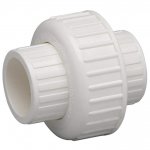After 15 runs to HD, I'm finally ready to glue this all together. What is the best sequence to glue? How do you maintain the correct angles when disassembling? Is it best to start in the middle and move out to each unit? Should I use a sharpie to mark the exact locations and angles before I get going? (I will be installing 1 more union for those concerned Thanks.
Thanks.
View attachment 65846
View attachment 65846


